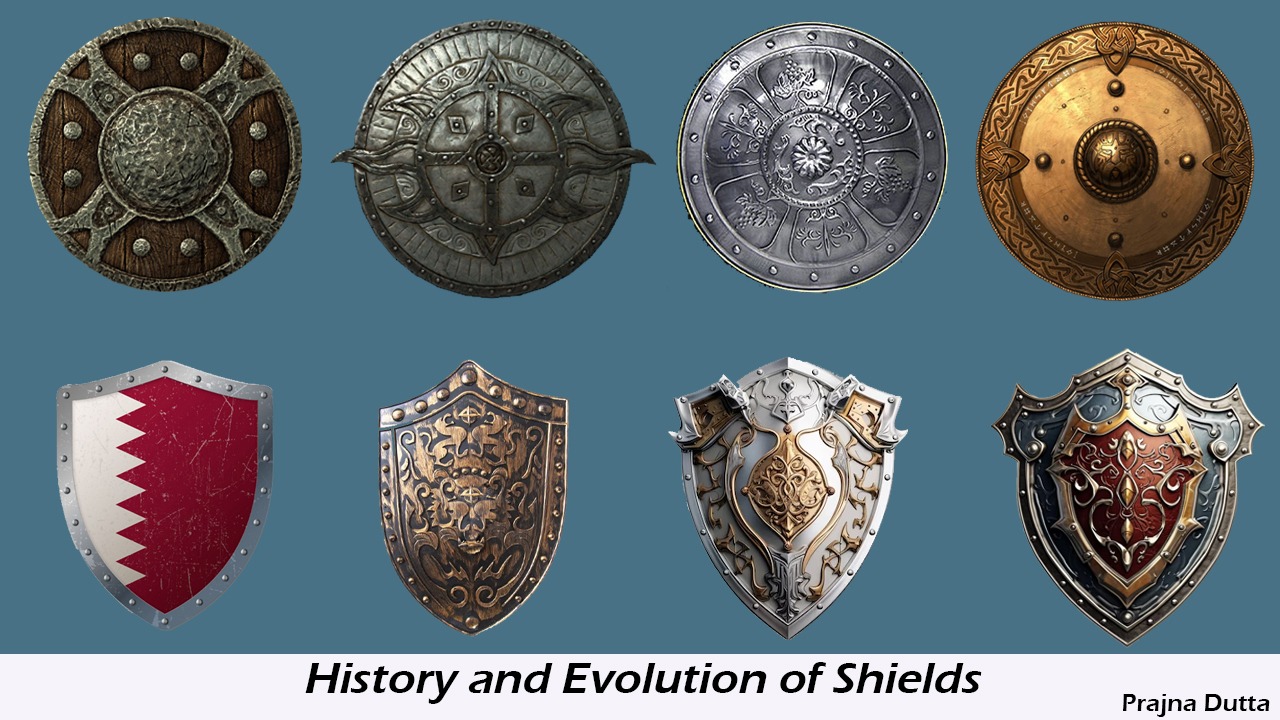Introduction:
Shields have played a crucial role in warfare throughout history, providing protection to warriors on the battlefield. From simple wooden constructions to advanced metal designs, shields have evolved over time to meet the challenges of different eras and combat styles. In this chapter, we will explore the history and evolution of different kinds of shields, highlighting notable examples and sharing intriguing anecdotes along the way.
1. Ancient Shields:
In ancient times, shields were primarily made of materials such as wood, leather, and animal hides. One notable example is the Greek hoplon, a large, round shield made of wood and covered with a layer of bronze. The hoplon was used by ancient Greek warriors, known as hoplites, and was designed to protect the warrior's entire body. An interesting anecdote is that hoplites would often decorate their shields with distinctive symbols, allowing them to identify each other on the battlefield.
2. Viking Shields:
During the Viking Age, shields played a vital role in Norse warfare. Viking shields were typically round and made of wood, often reinforced with metal rims and a central boss. These shields were lightweight and maneuverable, allowing the Vikings to excel in their swift and aggressive combat style. One fascinating anecdote is that Viking shields were not only used for protection but also served as a canvas for intricate and symbolic artwork, reflecting the individual warrior's identity and beliefs.
3. Medieval Shields:
In the medieval period, shields underwent significant changes due to advancements in armor and weaponry. Knights and men-at-arms used various types of shields, including the kite shield, heater shield, and targe. The kite shield, characterized by its elongated shape resembling a kite, provided excellent protection for mounted knights. An intriguing anecdote reveals that kite shields were often painted with heraldic designs, allowing knights to display their family emblems and distinguish themselves in battle.
4. Renaissance Shields:
During the Renaissance, shields became smaller and more specialized. Bucklers, for example, were small, round shields that allowed for greater mobility and versatility in combat. They were commonly used in conjunction with a sword, offering protection to the hand and forearm. An interesting anecdote is that the buckler became a symbol of personal honor and skill, as depicted in various fencing treatises and dueling practices of the time.
5. Samurai Shields:
In feudal Japan, shields were not as prevalent as in other cultures, but they still had a significant impact. One notable example is the tate, a large, rectangular shield made of wood and covered with lacquered leather. The tate was used by samurai warriors during the feudal era and was primarily employed in sieges and defensive battles. It provided protection not only against arrows but also against firearms introduced during the later periods. Anecdotal evidence suggests that samurai shields were often adorned with elaborate designs, reflecting the warrior's social status and clan affiliation.
6. Modern Shields:
With the advent of firearms and gunpowder warfare, shields gradually fell out of favor on the battlefield. However, they continued to find use in specific applications, such as riot control and personal protection. Modern riot shields, for example, are made of transparent polycarbonate, offering protection against projectiles and melee weapons while allowing law enforcement officers to maintain visibility. An interesting anecdote is that riot shields have evolved to incorporate additional features like handles, straps, and light-emitting diodes (LEDs) for improved functionality and visibility in low-light situations.
Conclusion:
The history and evolution of shields demonstrate the ingenuity and adaptability of warriors throughout the ages. From ancient times to the modern era, shields have been essential tools for protection in combat. They have evolved in design, materials, and purpose to meet the changing demands of warfare and combat styles. Shields not only provided physical defense but also served as symbols of identity, honor, and skill.
The anecdotes shared throughout this chapter offer glimpses into the fascinating stories and traditions associated with different types of shields. Whether it was the decorated hoplon of the Greek hoplites, the intricately designed Viking shields, or the heraldic kite shields of medieval knights, these shields became more than just defensive tools. They reflected the individual warrior's personality, allegiance, and social status, adding an element of personal expression and pride to the battlefield.
While shields may have lost their prominence in modern warfare, they continue to find utility in specific contexts such as riot control and personal protection. The development of modern riot shields with advanced materials and additional features showcases the ongoing evolution of shield technology to address contemporary challenges.
As we look back at the history and evolution of shields, we gain a deeper appreciation for the craftsmanship, creativity, and cultural significance associated with these vital tools of defense. They stand as a testament to the human desire for protection, personal expression, and the constant quest for innovation in the face of ever-changing circumstances on the battlefield.

Comments